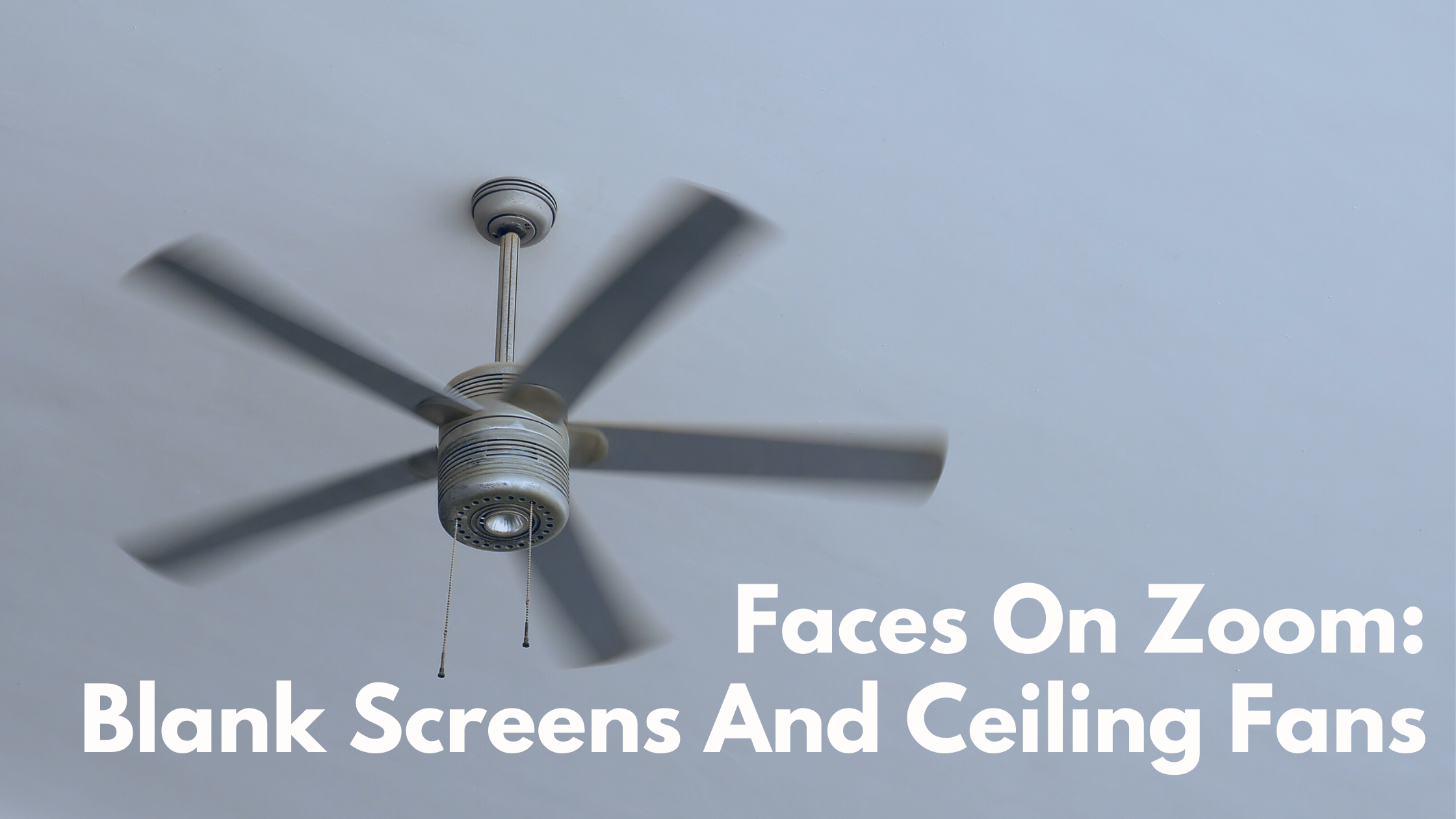We’ve all done it, right? You put time, effort, and energy into prepping a virtual lesson for the youth group. You’ve advertised, and you or your volunteers reach out to the students, then you get online early in case anyone drops in to chat. You wait, and soon people begin to log on. You think, ‘It’s going to be so great to see everyone!” You are so excited to see their faces on Zoom!
And then, That. Black. Screen. Or maybe worse, the spinning of the ceiling fan from wherever the student is sitting. Either way, even as you are missing students (because most youth ministries are down about 40% in attendance), the ones who DO show up are not seeming to actually show up. What’s the deal?
Maybe It Is Us
There are a few things happening here that we need to pay attention to. First, as always, our own motivating emotions. Some people get upset and call the student out. Some people click that little button saying “hide those without a camera” so they only see the students who felt like it was important enough to show up. The way we feel about the student without their screen on or without their full faces on the screen has more to do with us than it does with them.
Let’s be honest, even pre-pandemic, putting our time and energy into something that does not seem to engage our audience feels like a letdown. At a time when emotions, stress, and expectations are high, everything is going to feel heightened.
As the leader, you should identify your emotions connected to your response. If it is connected with your self-worth or with the rejection you feel when they don’t fully show up, keep it to yourself and sort through that later.
Once our own baggage is stowed, we can explore the possible reasons a student can have for not wanting to turn on their camera.
Why Students May Hide Their Faces On Zoom
Embarrassment About Their Environment
Being on a video call is an intimate window into a student’s life (and usually their bedroom because they have to find somewhere to be alone). What if they are embarrassed about their bedroom? What if they share a bedroom? They may have siblings that constantly need them or a parent or grandparent that may pop up at any moment? What if things are messy? Or their home life is not exactly how they portray it to be? Or maybe it isn’t what it was pre-quarantine. There are a lot of legitimately triggering things in a student’s life that may contribute to them not wanting everyone staring into their virtual window.
Overload
Many of these students are doing virtual school, virtual group hang out time, virtual connection with family members, and then, for a break, they can watch TV or get on social media. There is a great deal of literature out right now that indicates how much more emotional strain video-relating puts on a person in comparison to relating to one another in person. For minds that are not yet fully formed (and are largely ill-equipped to comprehend the consequences of their actions) this strain will be felt much more acutely.
What They See, Not What You See
How many times have you had a student cringe when looking at pictures of themselves? How many takes do you think most of them go through before they post a selfie or a TikTok?
As teenagers, they look to others around them to help reflect their own worth back to them. This is developmentally appropriate as they differentiate themselves from their families and become individuals. The pandemic has put a hard stop on that process for them, and the only people they have to help them with those reflections are their families (from whom they were in the process of differentiating).
Seeing their faces on Zoom when they are trying to interact with the rest of the group may just be too much for some of them and it makes a previously safe place become not only unsafe but detrimental to their self-worth.
So what can you do about it? Below are some ideas. Let’s address what you should not do before we discuss what you CAN do.
What You Should NOT Do
- Do not call attention to the fact that their camera is not on
- Do not speak to others whose cameras are on more than you address those not on screen
- Do not make “rules of etiquette” for students in an attempt to change their ways
- Do not confuse your need for people with their need for people. Yes, you may need to see people. But you are an adult, and therefore your processing is different from theirs.
What you CAN do
- Take stock of which students tune in but are reluctant to put the camera on their face. Do the same students do it every week?
- Reach out to those students (and all students). Tell them you appreciate that they are tuning in regularly.
- Tell your students about something you see and appreciate in them, and make sure it is not physical. Keep doing so.
- Have a night where no one uses their camera and chat is just audio.
- Try to create your games around the option to use or not to use their camera. Or, make games optional.
- Remind the students they CAN hide their self-view during group calls but do so in a way that does not call attention to those who are not using their cameras.
- Forgive yourself for taking it personally
- Give yourself, and everyone else a break. You are doing the best you can, and even if you are not, that’s ok too.
Remember, when your youth don’t show their faces on Zoom, it’s not personal. Identify your emotions and use your creativity to meet their needs in these challenging times.

Chris has served at First Church Coral Springs as the Director of Student Ministries for 8 years. He is a graduate from Dallas Theological Seminary with his Masters in Christian Education and a Youth Ministry Institute Alumnus. He is passionate about discipling young people to become future leaders in the church.
Listen to Kelly’s interview on our podcast – Making Sense of Ministry.


We Would Love to Hear Your Thoughts